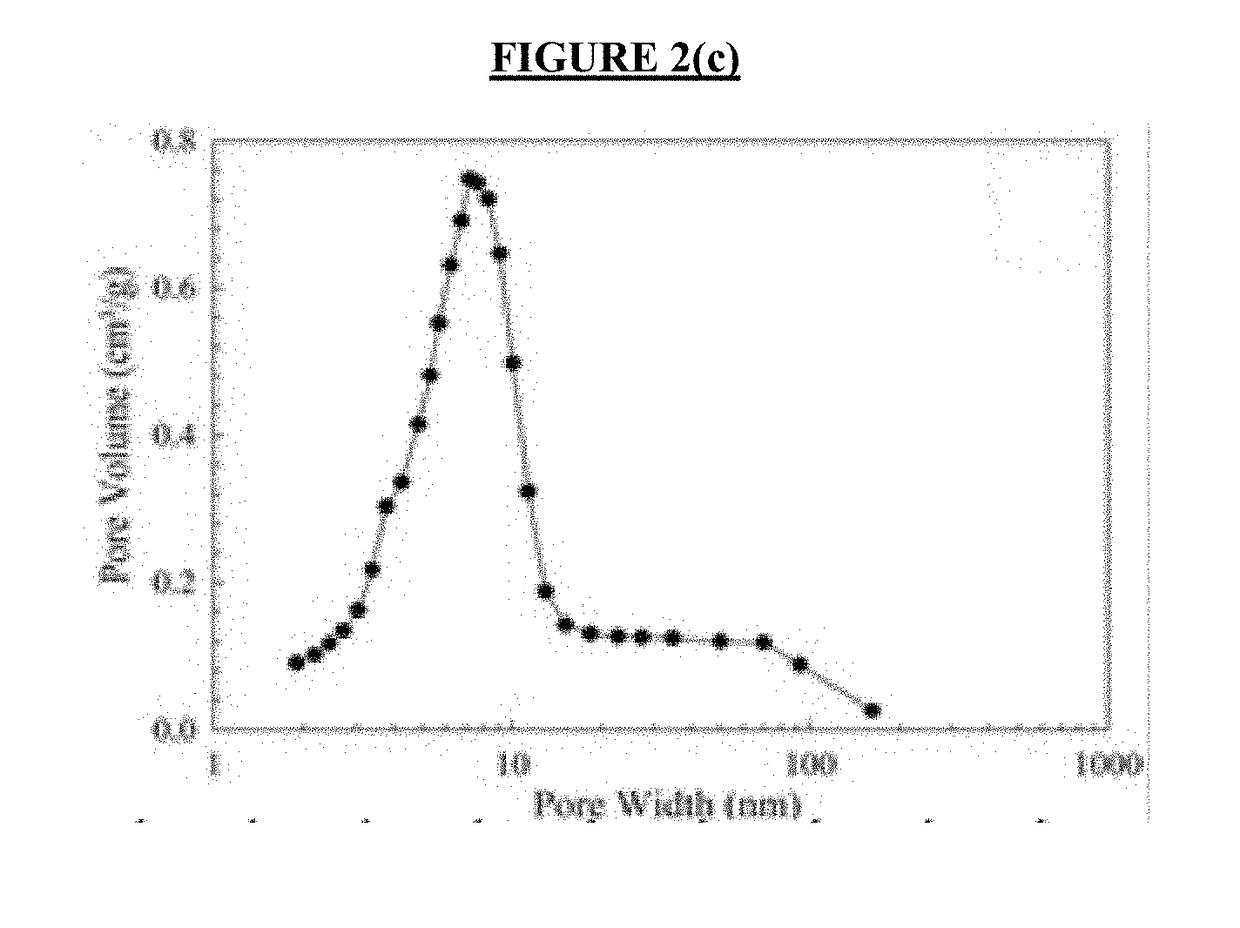Synthesis of a Novel Ordered Mesoporous Carbon Using COK-19 Template for Water and Wastewater Treatment
a mesoporous carbon and template technology, applied in the field of waste water treatment, can solve the problems of high initial cost, detrimental effects on aquatic life, special regulations on industrial effluents, etc., and achieve the effect of reducing the number of pore sizes, and increasing the specific surface area
- Summary
- Abstract
- Description
- Claims
- Application Information
AI Technical Summary
Benefits of technology
Problems solved by technology
Method used
Image
Examples
Embodiment Construction
[0024]This application describes the synthesis of ordered mesoporous carbon (OMC) using mesoporous silica as the template to provide structure. In this example, sucrose is used as a carbon source, but other sources of carbon can be used. Also in this example, a highly ordered mesoporous silica referred to as “COK-19” was used. COK-19 was synthesized and reported by S. Kerkhols, et al. in 2015 with cubic Fm3m structure.
[0025]The procedure involved was impregnation of an appropriate carbon precursor into the mesopores of silica template followed by thermal polymerization, carbonization, and subsequent removal of silica framework by hydrofluoric acid. The synthesis procedure was modified from the original literature (J. Xu et al., 2014) and experimental conditions were adopted (amount of reactants, reactants used, temperatures etc.). Although directed toward removal of both organic and inorganic absorbates, in one example, resorcinol was used as a model compound to evaluate the adsorpt...
PUM
| Property | Measurement | Unit |
|---|---|---|
| Temperature | aaaaa | aaaaa |
| Temperature | aaaaa | aaaaa |
| Temperature | aaaaa | aaaaa |
Abstract
Description
Claims
Application Information
 Login to View More
Login to View More - R&D
- Intellectual Property
- Life Sciences
- Materials
- Tech Scout
- Unparalleled Data Quality
- Higher Quality Content
- 60% Fewer Hallucinations
Browse by: Latest US Patents, China's latest patents, Technical Efficacy Thesaurus, Application Domain, Technology Topic, Popular Technical Reports.
© 2025 PatSnap. All rights reserved.Legal|Privacy policy|Modern Slavery Act Transparency Statement|Sitemap|About US| Contact US: help@patsnap.com



